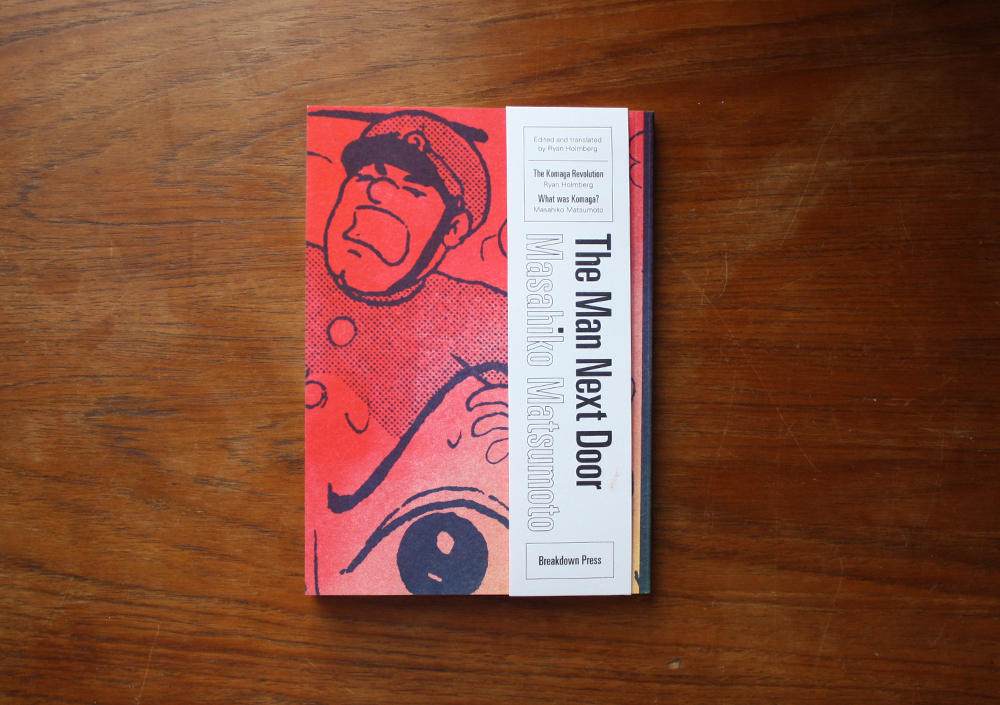The Man Next Door by Masahiko Matsumoto
The Man Next Door by Masahiko Matsumoto
Edited and translated by Ryan Holmberg -- cover, translation typesetting and layout designed by Joe Kessler and Alex Johns
135 x 190mm -- 130 pages -- Risograph printed -- perfect bound
By the late 1950s, a new language of expression had come to dominate Japanese comics. Against the conventions of children's manga, it introduced a more adult focus on dynamic cinematic panelling, gritty urban settings, and the violence and hardships of everyday life in postwar Japan. Today, this style is known as "gekiga" (dramatic pictures), a term coined by one of Japan's most famous cartoonists, Yoshihiro Tatsumi, in 1957.
The true innovator, however, was a little known figure named Masahiko Matsumoto. His name for the style was "komaga" (panel pictures), in honor of the fact that the essence of storytelling in the comics medium is based on the dramatic composition of multiple paneled pictures. Matsumoto began exploring this new language in 1954, then perfected it in a series of gripping mystery stories between 1955 and 1957. Japanese comics would never be the same.
The Man Next Door collects four of Matsumoto’s "komaga" stories, each of which have been translated into English for the first time. The volume also includes an essay by Ryan Holmberg on the importance of Matsumoto's work in the history of Japanese manga, as well as an explanation of "komaga" by the artist himself.
The Man Next Door was printed by Risograph at Victory Press in London.
The production of this book was supported by the Sainsbury Institute for the Study of Japanese Arts and Cultures.





